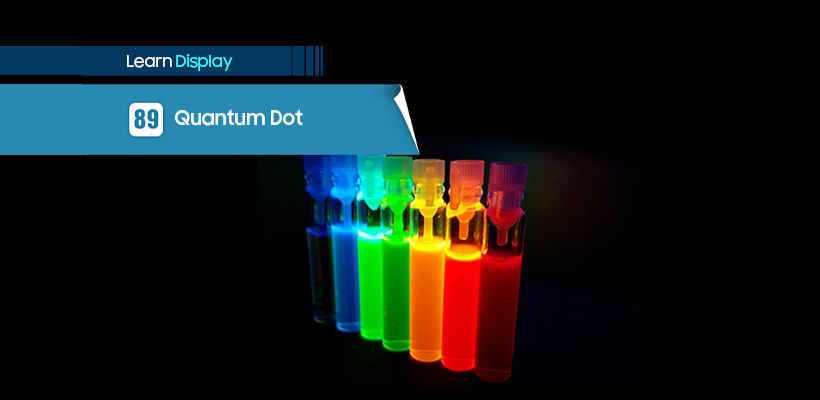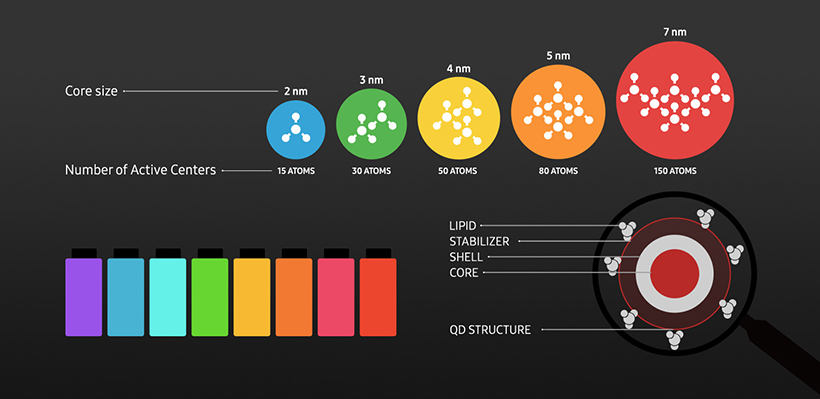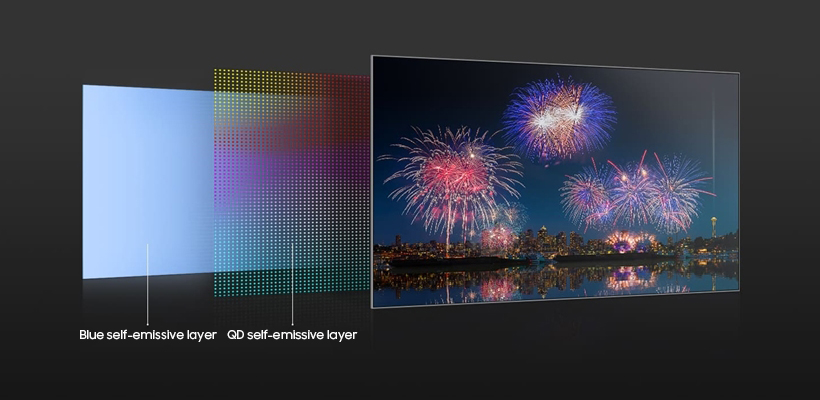
A quantum dot (QD) refers to an ultra-fine semiconductor particle that is only a few nanometers (㎚) in size. Considering that one nanometer is one billionth of a meter, quantum dots are extremely tiny. Generally speaking, a QD is 2㎚ to 10㎚ big and consists of the core and the shell.

One of the characteristics of a QD is that when light is projected onto it or an electrical current is applied to it, the color of the nanoscale particle will vary depending on its size. In other words, even in the same material, a smaller QD will emit blue light, while a bigger QD particle will emit red light – a reason why it is sometimes called the wizard of light.
QDs were first discovered in 1982 by Russian scientists, who were studying stained glass used to decorate the windows of chapels and discovered the particles in the cadmium (Cd) compound, the key component of semiconductors. The scientists named what they observed the ‘quantum confinement effect’.

QDs are expected to be used in a wide range of areas including displays, solar cells, bio sensors, and quantum computers, thanks to their ability to emit high-purity light in various colors and their excellent chemical properties. A QD display refers to a display that uses the self-emissive property of QDs.



